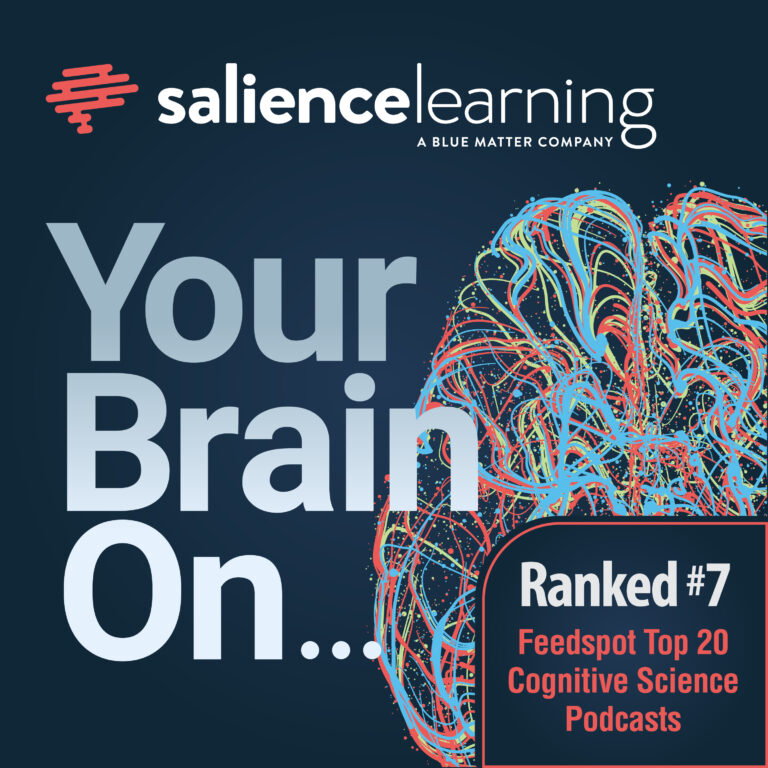Article • February 8, 2022
Do your learners need “Storytelling Skills”? Not exactly…

Fads and fashions tend to come and go. For a while, a certain thing is all the rage and then, after a time, it tends to fade away, only to be replaced by something else. This is true of clothing, television programs, music, and more. But it’s also true in learning and development. As an L&D professional, you’ve no doubt noticed this.
Well, I don’t know if this is a fad, but my colleagues and I have been noticing something of late. More and more we’re hearing clients say something like, “Our teams need to tell better stories,” or “If only our teams’ storytelling skills were better.” In addition, I’ve also seen learning programs popping up that claim to teach learners how to become top-notch story tellers.
With all this talk about storytelling, it prompted me to think critically about it. Why all the fuss about storytelling? What need is driving it? Is “storytelling” even the right solution? Do learners in the professional workforce really need storytelling skills…or is the real need something else altogether?
If you’ve thought about storytelling or think your learners might need to build those skills, then read on. The rest of this article may help you get to the core issue and save you time and resources when it comes to acquiring or developing a learning solution for “storytelling.”
Don’t call it storytelling
First, it’s helpful to define “story.” Oxford Languages dictionary defines a story as: an account of imaginary or real people and events told for entertainment. The skills necessary to create great stories include defining story elements (like characters, settings, conflicts, and resolutions), applying language to express and explain those in an entertaining way, and (as most writers would attest) an immense amount of patience. So, when our clients and other colleagues in the life science industry say they need their teams to tell better stories, is this what they really need? I respectfully disagree.
In most cases I will argue that what clients are really saying is that they want their learners to be able to communicate information to an audience in a way that gets that audience to do something. Professionals are not telling stories for entertainment. They’re telling stories to drive action: action in the sense of physical movement or, as is more often the case in the knowledge economy and life-sciences industry, action in the sense of thinking movement, like changing opinions or conclusions.
Account Executives communicate information to move a payer’s thinking that a therapy does not have value to the conclusion that it does – and then putting it on formulary. Marketing leaders communicate information to move a corporate leader’s thinking that a certain program isn’t essential to the department’s success to it being essential – and then securing the appropriate budget. In either case, the information is communicated to generate movement.
If it isn’t storytelling, then what is it?
The solution is NOT to train learners to create interesting characters in unique settings where they resolve conflicts all tied up with a good nail-biting ending. The solution is to improve learners’ abilities to craft an argument: not an argument involving fisticuffs, but “a reason or set of reasons that someone uses to show that something is true or correct,” as defined by Oxford Languages. That something is the desired future state either as a thinking state (“This drug actually does have tremendous value”) or physical state (the drug is placed on formulary).
Being able to craft and deliver an argument requires two foundational capabilities: Critical Thinking and Effective Communication. It also requires Emotional Intelligence and a few others, but we’ll stick with these two first.
Critical Thinking
Critical thinking is defined as the effortful and continuous analysis of the validity of a conclusion. Think of a five-year-old asking, “Why is the sky blue?” “Why does milk come from cows?” “Why don’t I have a baby brother?”
Before communicating anything to an audience, one needs to ask “Why?” and think it through to identify the reasons an audience should move physically or thinkingly.
First, one would ask questions and gather information:
- Who is the audience?
- What is the desired future state (what is the “ask”)?
- What are their needs and motivations and perspectives?
- What are the grounds, causes, rationales or reasons that justify the desired future state? What data, information or evidence supports those statements?
- Filter the total population of statements in #4 to identify those that are compelling based on #3.
The output of this thinking process is then crafted into a logical sequence of statements to make the case for the ask. Logical and reasonable sequencing take critical thinking to then continually question the rigor of the step-by-step argument assembled. “Would I move based on this?” “Would this move someone to action? To change their mind?” If no, then back to #4 above.
It’s not storytelling, its thinking.
Communication
When it comes time to deliver an argument to an audience—whether it’s via a presentation, video, paper, or some combination of things—it’s important to do so in a way that gets results. First and foremost, that means not arguing! If you find yourself arguing while delivering an argument, go back and think critically. Then ensure that you have:
- Accounted for power differentials and cultural differences – meaning, include the “ask” in an appropriate way.
- Ensured verbal and non-verbal signals are aligned – meaning, if it’s a serious decision, dress appropriately.
- Minimized cognitive overload – meaning, give time to process and don’t read from slides.
When these attributes describe how you deliver an argument, it becomes persuasive…and persuasion yields action.
What now?
As an L&D professional, if your internal customers say they want to develop storytelling skills—or if you are thinking about acquiring a storytelling curriculum—the first thing you should do is think critically. Why do they need to tell better stories? What outcome do stakeholders want? What’s making it difficult for learners to do that now? Once you’ve identified the core need, you’ll be in a much better position to select the right learning solution.
The second thing you should do is find that solution. Chances are, you won’t really need a curriculum that focuses on character development, settings, and conflict. It might be better to look for a solution that empowers learners to assess their thinking process, question conclusions and gather evidence (one that helps them argue better, not tell better stories).
As an aside, this entire article was an argument, and not a dragon or damsel in earshot or a single fist thrown. That said, it did take a lot of patience.




